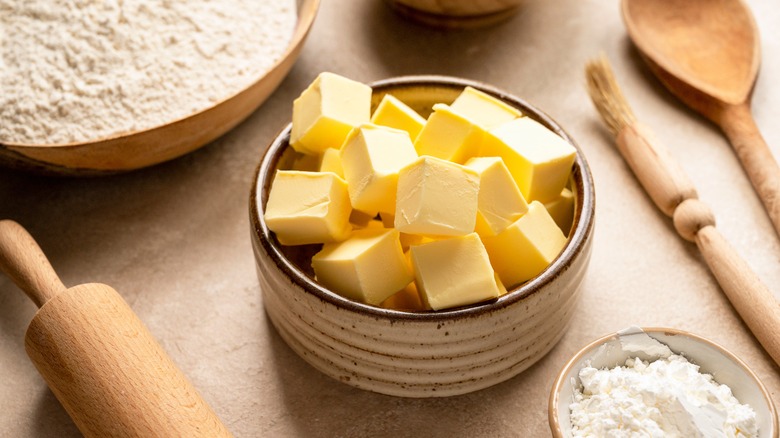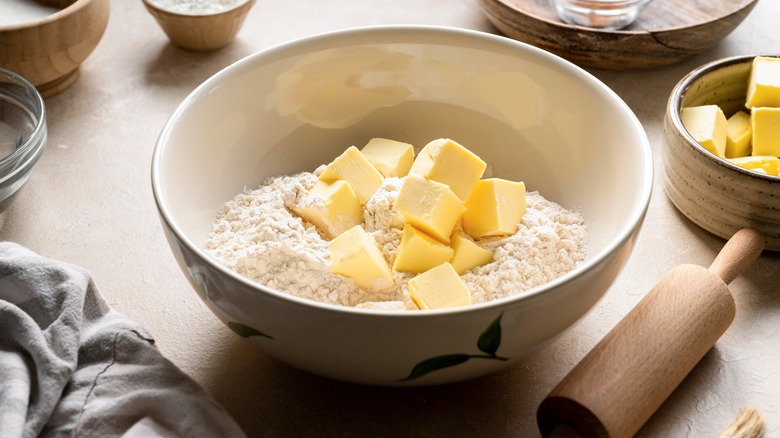Ree Drummond's Cold Butter Hack Takes The Stress Out Of Baking
Let's admit it: Eating baked treats is oftentimes far more enjoyable than the actual baking itself. Unlike cooking, which can mostly be pulled off by adding a bit of this and that, mistakes made in baking are pretty much irreversible. Most times, you won't even know that you've done something wrong until you see the end result — perhaps a cake that's sunk in the middle or cookies as flat as paper.
The Spruce Eats explains that baking is tricky because each ingredient in the recipe plays a particular role beyond its taste. Flour is the base, baking soda and baking powder make things rise, eggs keep things light and fluffy, salt paces out yeasted breads from rising too quickly, and fats like butter add flavor and texture. All in all, baking is a science, where one wrong step can mess with the careful balance of ingredients.
Thankfully, there are tons of baking hacks that can render your dessert-making a little less stressful and a lot more foolproof, and Ree Drummond is something of a pro at them. The Pioneer Woman started baking when she was just 7 years old, and by her teenage years, she was regularly experimenting with new recipes, according to her blog. Safe to say, she learned a fair few baking tricks along the way, like her clever tip when it comes to working with cold butter and flour.
Slice your butter and coat it in flour before mixing it
The Pioneer Woman has tons of advice to make baking less stressful. When it comes to butter in particular, the most important thing Drummond says is to make sure that it's at the right temperature for your recipe. In general, butter that needs to be creamed with sugar should be a little cooler than room temperature.
Flaky items like biscuits, pie crusts, and scones, on the other hand, will need butter that's ice cold to be mixed into the dry flour. As these chunks of butter melt in the oven during baking, the resulting pockets of air are what will make the bake flaky, explains MasterClass. This is why it's important to get this step right, and The Pioneer Woman has a tip for it: slicing the cold butter first.
Rather than plopping an entire stick of butter in flour and then trying to separate huge the clumps, Drummond suggests slicing cold butter into more manageable pieces first. It also helps to coat the cold butter slices in a little bit of flour before mixing them into the entire batch. This protective layer will allow you to better break up the butter into the flour, without melting it with your hands. In a similar vein, MasterClass suggests freezing an entire stick of butter and then grating it into the flour to make it even easier to work with. Why not test out both tips on these seriously delicious pie recipes?

